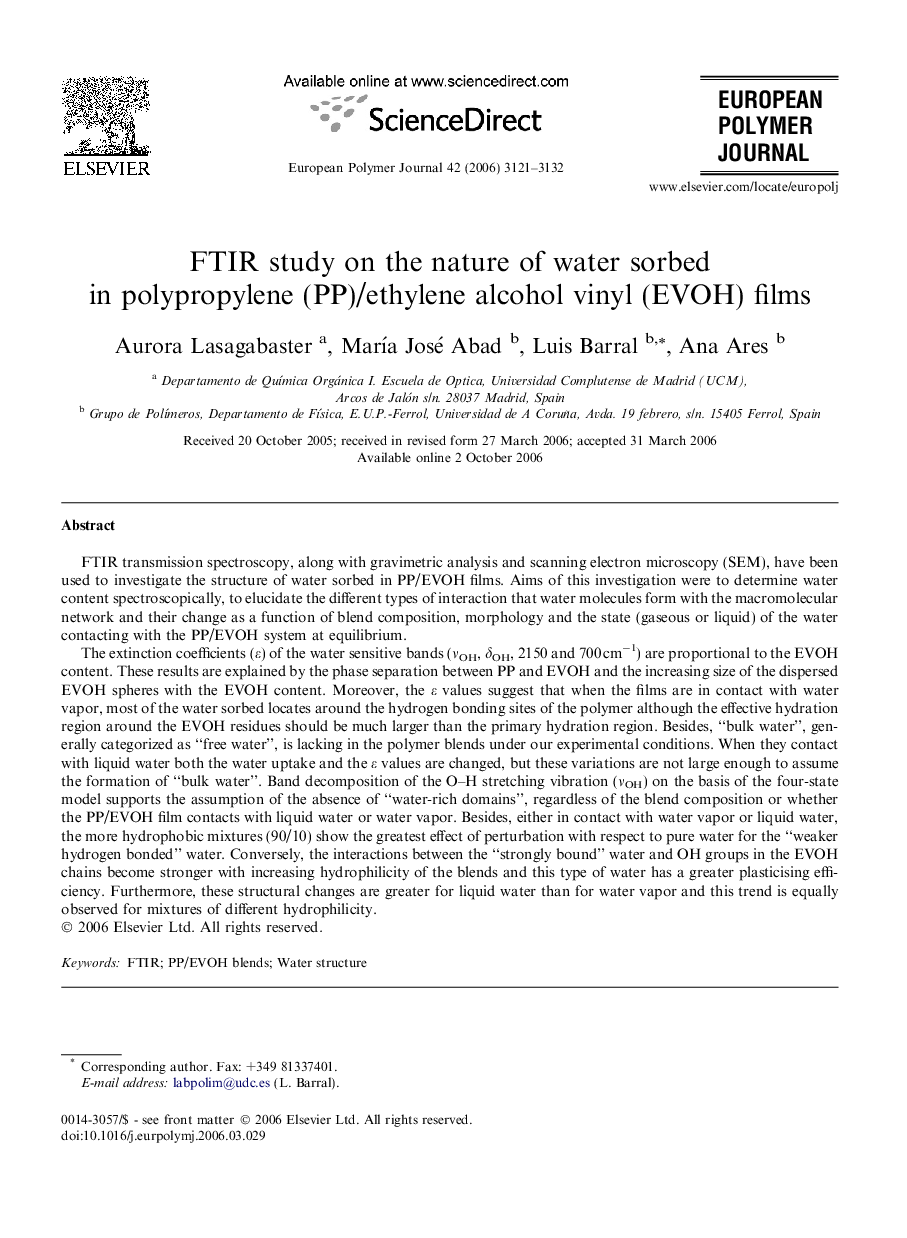| کد مقاله | کد نشریه | سال انتشار | مقاله انگلیسی | نسخه تمام متن |
|---|---|---|---|---|
| 1400223 | 984538 | 2006 | 12 صفحه PDF | دانلود رایگان |

FTIR transmission spectroscopy, along with gravimetric analysis and scanning electron microscopy (SEM), have been used to investigate the structure of water sorbed in PP/EVOH films. Aims of this investigation were to determine water content spectroscopically, to elucidate the different types of interaction that water molecules form with the macromolecular network and their change as a function of blend composition, morphology and the state (gaseous or liquid) of the water contacting with the PP/EVOH system at equilibrium.The extinction coefficients (ε) of the water sensitive bands (νOH, δOH, 2150 and 700 cm−1) are proportional to the EVOH content. These results are explained by the phase separation between PP and EVOH and the increasing size of the dispersed EVOH spheres with the EVOH content. Moreover, the ε values suggest that when the films are in contact with water vapor, most of the water sorbed locates around the hydrogen bonding sites of the polymer although the effective hydration region around the EVOH residues should be much larger than the primary hydration region. Besides, “bulk water”, generally categorized as “free water”, is lacking in the polymer blends under our experimental conditions. When they contact with liquid water both the water uptake and the ε values are changed, but these variations are not large enough to assume the formation of “bulk water”. Band decomposition of the O–H stretching vibration (νOH) on the basis of the four-state model supports the assumption of the absence of “water-rich domains”, regardless of the blend composition or whether the PP/EVOH film contacts with liquid water or water vapor. Besides, either in contact with water vapor or liquid water, the more hydrophobic mixtures (90/10) show the greatest effect of perturbation with respect to pure water for the “weaker hydrogen bonded” water. Conversely, the interactions between the “strongly bound” water and OH groups in the EVOH chains become stronger with increasing hydrophilicity of the blends and this type of water has a greater plasticising efficiency. Furthermore, these structural changes are greater for liquid water than for water vapor and this trend is equally observed for mixtures of different hydrophilicity.
Journal: European Polymer Journal - Volume 42, Issue 11, November 2006, Pages 3121–3132